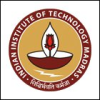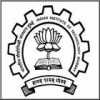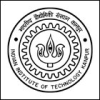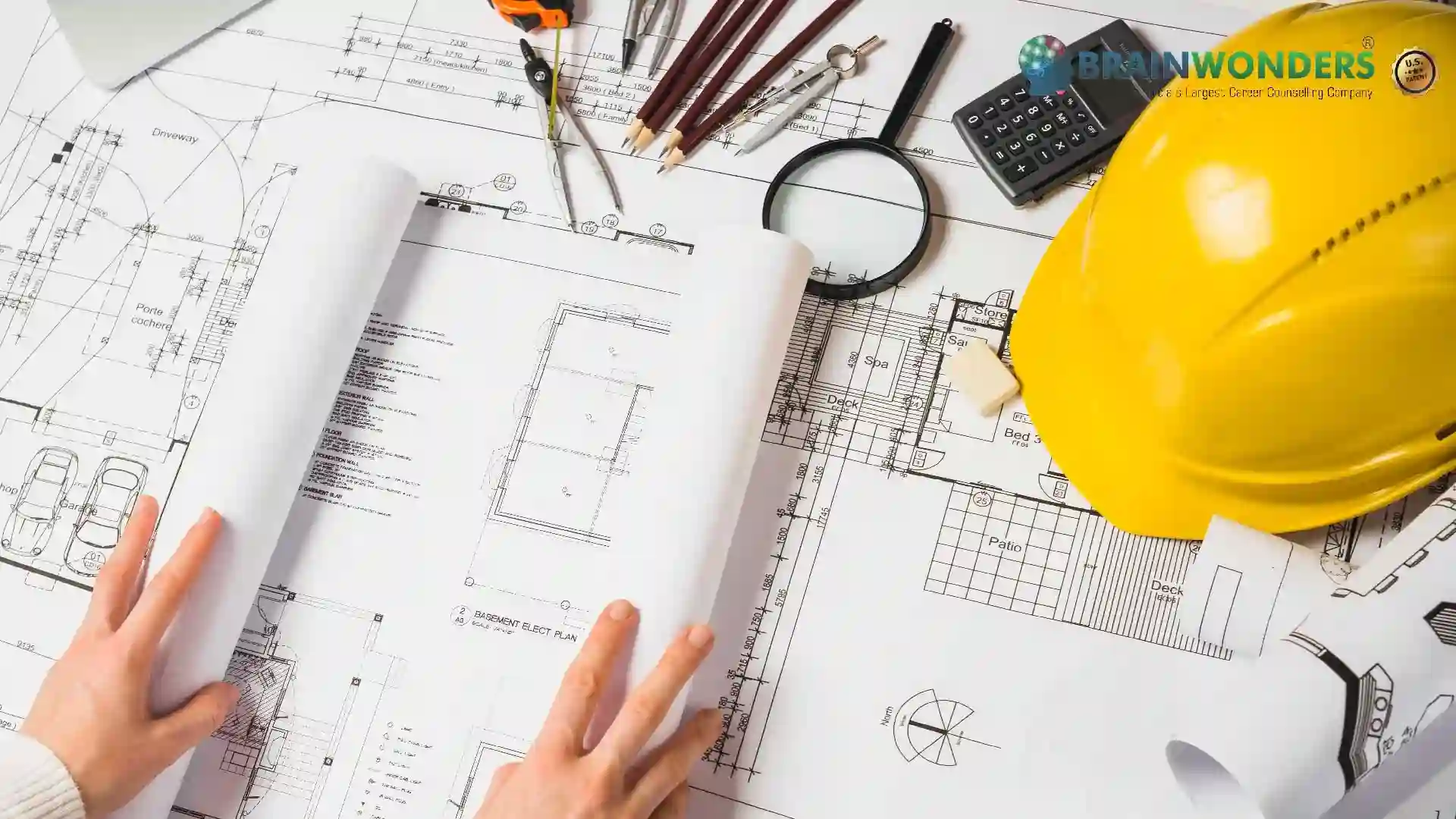How to become an Aerospace Engineer
Overview, Courses, Exam, Colleges, Pathways, Salary
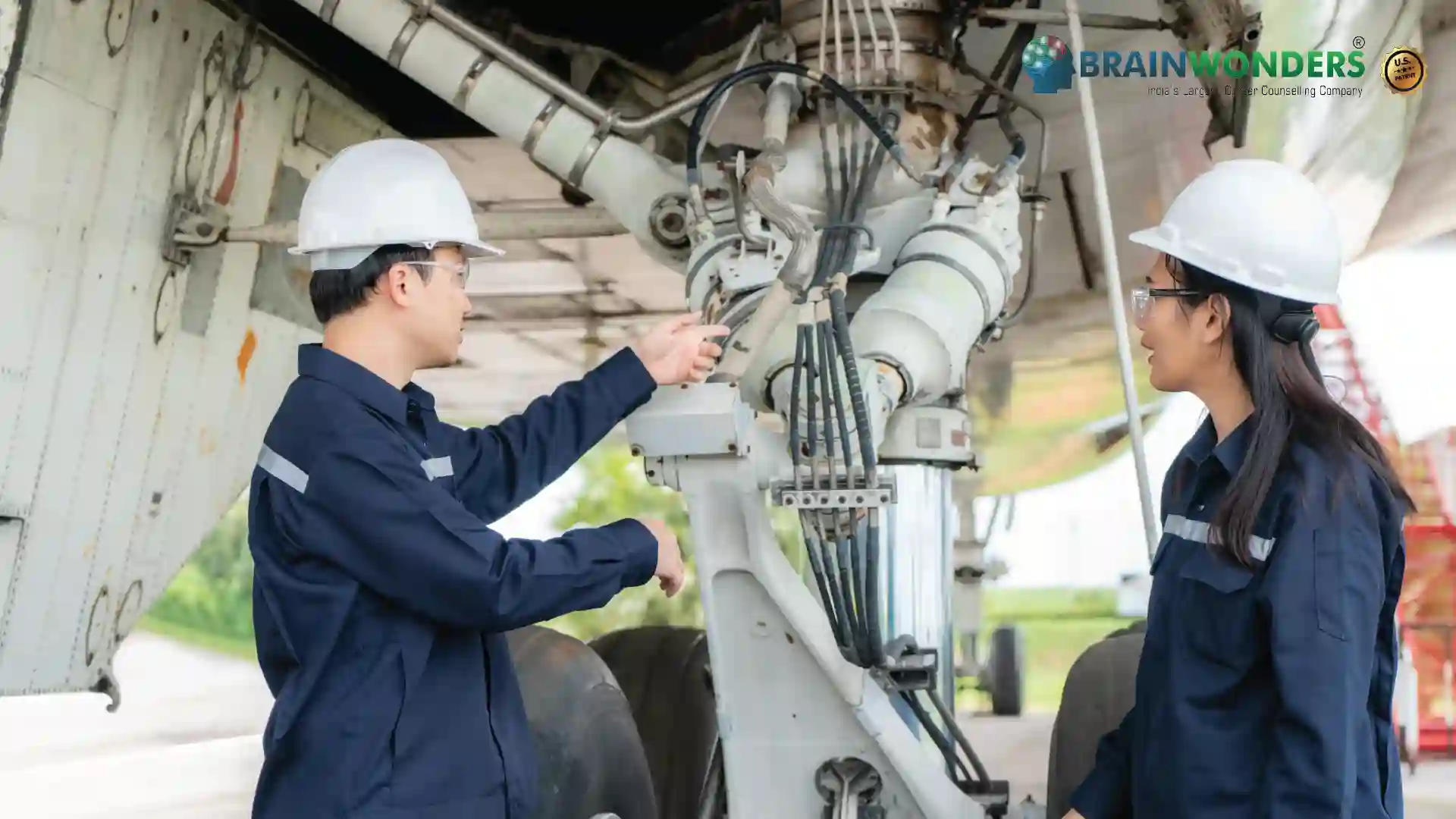
Overview
Who is Aerospace Engineer ?
Do you love aircrafts and spacecrafts? Do you love science and space and are not afraid of heights and big mathematical calculations? Then, aerospace engineering is just the career for you. Life is not rocket science but aerospace engineering definitely is. It is the field of engineering that focuses on the production and development of aircrafts, spacecrafts and everything in between. Aeronautical engineers are the genius behind designing weapon systems, satellites, missiles, aircrafts and spacecrafts. Aerospace engineers may be employed in design and analysis, manufacturing, and even research and development.
Aerospace engineering overlaps with two other branches: aeronautical and astronautical engineering. When addressing the differences between the three branches, where aeronautical engineers majorly deal with flights within the earth’s atmosphere, astronautical engineers cover travel in space and aerospace engineers cover both realms. This Engineering discipline provides students with the necessary skills and knowledge for designing, manufacturing, and maintaining aircraft, spacecraft, weapon systems, and missiles.
Aerospace engineering encompasses core domains such as aerodynamics, aerospace structures, engines, rockets, and missile technologies, spacecraft technologies, navigation guidance and control systems, and avionics, as well as fundamental common courses such as thermal engineering, heat transfer, fluid mechanics, and solid mechanics, among others. (Insert this line here) This engineering branch is regarded as one of the most difficult, as it includes the study of both Aeronautical and Astronautical Engineering (Aircraft and spacecraft). Aerospace engineering is important because it allows for the development of new ideas.
These concepts have an impact on flight on Earth and in space. Because of the diversity of this field, some Aerospace Engineers focus on aircraft on Earth, while others study spacecraft that operate beyond the Earth`s atmosphere. Through design, research, and development, an aerospace engineer improves fuel efficiency, flight safety, analyses new materials, employs advanced technologies, and works to reduce the environmental impact of air travel.
Here are some steps to becoming an Aerospace Engineer
- Educational Qualifications: Obtain a bachelor's degree in aerospace engineering or a related field. Aerospace engineering programs cover topics such as aerodynamics, propulsion systems, materials science, and aircraft design.
- Strong Foundation in Mathematics and Science: Develop a solid understanding of mathematics and science subjects, especially physics and calculus, as they form the basis of aerospace engineering principles.
- Internships and Projects: Seek internships or participate in aerospace-related projects during your undergraduate studies to gain practical experience and apply classroom knowledge.
- Advanced Degrees (Optional): While not always necessary, pursuing a master's or Ph.D. in aerospace engineering or a specialized area can enhance your qualifications and open up more advanced career opportunities.
- Hands-on Experience: Gain hands-on experience by participating in engineering clubs, building model aircraft, or joining aerospace-related competitions.
- Specialization (Optional): Consider specializing in a specific area within aerospace engineering, such as aircraft design, avionics, propulsion, or space systems.
- Networking: Build a professional network by attending aerospace industry events, conferences, and career fairs. Networking can help you stay informed about job opportunities and industry trends.
- Professional Skills: Develop skills in computer-aided design (CAD) software, programming, and computational tools commonly used in aerospace engineering.
- Stay Updated: Keep abreast of the latest advancements and developments in aerospace technology by reading industry publications and staying connected with industry professionals.
- Apply for Entry-Level Positions: Look for entry-level aerospace engineering positions in aerospace companies, research institutions, or government agencies. Tailor your resume to highlight your relevant skills and educational background.
- Continuous Learning: Aerospace engineering is a rapidly evolving field, so engage in continuous learning and professional development to stay current with industry advancements.
- Obtain Professional Certification (Optional): Some aerospace engineers pursue professional certifications to demonstrate their expertise and commitment to the field. While not mandatory, certifications can enhance your credentials.
Typical day at work
What does Aerospace Engineer do?
Typically, an aerospace engineer job description comprises of the following tasks:
- Consider proposals for projects to determine if they are technically feasible
- Evaluate if the proposed projects are financially feasible and safe
- Direct the design, manufacture, and testing of aircraft and aerospace products and coordinate with peers accordingly
- Establish various parameters and acceptance criteria for design methods, quality standards, sustainment after delivery, and completion and delivery dates
- Ensure that the products meet not only the engineering principles and customer requirements, but also the environmental regulations
- Conduct Inspections to identify malfunctioning or damaged products, their sources of problems and possible solutions
Abilities and Aptitude needed
What are the skills, abilities & aptitude needed to become Aerospace Engineer?
- Critical thinking entails using logic and reasoning to assess the strengths and weaknesses of various solutions, conclusions, or approaches to problems.
- Reading Comprehension is the ability to comprehend written sentences and paragraphs in work-related documents.
- Science is the application of scientific principles and methods to the solution of problems.
- Active listening entails paying close attention to what others are saying, taking the time to understand the points being made, asking questions as needed, and refraining from interrupting at inappropriate times.
- Writing - Effectively communicating in writing as appropriate for the needs of the audience.
- Speaking entails conversing with others in order to effectively convey information.
- Mathematics is the application of mathematics to the solution of problems.
- Complex Problem Solving entails identifying complex problems and reviewing relevant information in order to develop, evaluate, and implement solutions. • Operations Analysis entails analysing needs and product specifications in order to create a design.
- Monitoring entails keeping track of and evaluating your own, other people's, or organisations' performance in order to make improvements or take corrective action.
- Decision Making and Judgment - Considering the relative costs and benefits of potential actions to select the best one.
- Understanding the implications of new information for current and future problem-solving and decision-making is an example of active learning.
- Systems evaluation entails identifying measures or indicators of system performance as well as the actions required to improve or correct performance in relation to the system's goals.
- Systems analysis is the process of determining how a system should operate and how changes in conditions, operations, and the environment will affect the outcome.
- Learning Strategies are the methods and procedures for selecting and implementing training/instructional methods and procedures that are appropriate for the situation when learning or teaching new things.
- Technology Design - Creating or adapting equipment and technology to meet the needs of users. Coordination is the process of adjusting one's actions in relation to the actions of others.
- Quality Control Analysis entails testing and inspecting products, services, or processes in order to assess their quality or performance.
- Time Management entails managing one's own time as well as the time of others. Persuasion is the process of persuading others to change their minds or behaviour.
- Negotiation entails bringing people together and attempting to resolve disagreements. Instructing entails instructing others on how to do something.
- Social Perceptiveness entails being aware of other people's reactions and comprehending why they react the way they do.
- Service Orientation entails actively seeking ways to assist others.
- Monitoring operation entails keeping an eye on gauges, dials, or other indicators to ensure that a machine is operating properly.
- Personnel Resource Management entails motivating, developing, and directing employees while also identifying the best people for the job.
Salary
Salary for Aerospace Engineer?
The salary of an Aerospace Engineer can vary based on factors such as experience, location, employer, and specialization. In countries like the United States, the average annual salary for aerospace engineers ranges from $75,000 to $120,000. In India, entry-level salaries typically start around ?3 to ?6 lakhs per annum, while experienced engineers may earn higher salaries. Aerospace engineers with advanced degrees and expertise in specific areas may command even higher remuneration.
Pathways
How to become an Aerospace Engineer?
Entrance Exam
Entrance Exam for Aerospace Engineer ?
Courses
Which course I can pursue?
Best Colleges
Which are the best colleges to attend to become an Aerospace Engineer?
Industries
Which Industries are open for Aerospace Engineer?
- Aerospace and Defense Companies: Major aerospace and defense companies are the primary employers of aerospace engineers. These companies design and manufacture commercial and military aircraft, spacecraft, satellites, and defense systems.
- Aviation Industry: Airlines and aviation companies hire aerospace engineers to work on aircraft maintenance, safety, and performance improvement.
- Space Exploration and Satellite Companies: Organizations involved in space exploration, satellite technology, and space missions require aerospace engineers to work on spacecraft design and space-related projects.
- Research and Development Organizations: Aerospace engineers can work in research institutions, government agencies, and private companies engaged in aerospace research and technology development.
- Consulting Firms: Aerospace engineers may work in consulting firms that offer specialized services to aerospace and defense industries.
- Automotive Industry: Some aerospace engineers find opportunities in the automotive industry, especially in research and development of advanced vehicle technologies.
- Energy Industry: With the increasing interest in renewable energy sources, aerospace engineers may contribute to the development of wind turbines and other alternative energy systems.
- Manufacturing and Engineering Services: Aerospace engineers can work in manufacturing companies that produce components and systems for aerospace and defense applications.
- Robotics and Automation: Aerospace engineers with knowledge of automation and control systems can work in industries that require robotics and automation technologies.
- Academia: Aerospace engineers can pursue careers in academia as professors or researchers, contributing to the advancement of aerospace knowledge.
- Entrepreneurship: Some aerospace engineers may choose to start their own aerospace-related companies, focusing on innovative products and services.
internship
Are there internships available for Aerospace Engineer?
- Aerospace Companies: Major aerospace companies often offer internships to engineering students. These internships can involve working on projects related to aircraft design, propulsion systems, avionics, or space exploration.
- Government Agencies: Government organizations like NASA or space agencies in other countries offer internships in aerospace engineering, where you can contribute to space missions and research.
- Research Institutions: Aerospace research institutions and universities research cutting-edge technologies and may offer internships for aerospace engineering students.
- Airlines and Aviation Companies: Airlines and aviation companies may have aircraft maintenance, safety, and operations internships.
- Aerospace Startups: Startups in the aerospace industry often seek interns to work on innovative projects and contribute to developing new technologies.
- Defense Contractors: Companies working with the defense industry may offer internships in defense systems, UAVs (Unmanned Aerial Vehicles), or military aircraft.
- Space Tourism and Exploration Startups: With the rise of space tourism and private space exploration ventures, there are opportunities to intern with companies in these emerging fields.
Career outlook
What does the future look like for Aerospace Engineer?
Aerospace engineering has the potential to open a world of opportunities not limited to the space scene. As an aerospace engineer, one can even join the air force or become a flight engineer or aircraft engineers. Though, most aerospace engineers dream of joining NASA. When talking about the employment of aerospace engineers, it is expected to grow slower than the average occupation. However, due to education requirements and an unsaturated job market, there seems to be a demand for aerospace engineers.
Aerospace engineer employment is expected to grow at a rate of 8% between 2020 and 2030, which is about the same as the national average for all occupations. On average, 4,000 aerospace engineer job openings are expected each year over the next decade. Many of those openings are expected to be created as a result of the need to replace workers who transfer to different occupations or leave the labour force for other reasons, such as retirement.
Frequently Asked Questions:
1. What qualifications do you need to be an aerospace engineer?
Answer: To become an aerospace engineer, you typically need the following qualifications:
- Bachelor's Degree: Obtain a bachelor's degree in aerospace engineering or a related field, such as mechanical or aeronautical engineering.
- Strong Background in Math and Science: A solid foundation in mathematics and science subjects, particularly physics and calculus, is essential for understanding aerospace engineering principles.
- Technical Skills: Develop skills in computer-aided design (CAD) software, programming, and computational tools used in aerospace engineering.
2. How long does it take to become an aerospace engineer?
Answer: The duration to become an aerospace engineer can vary depending on your chosen educational path. Generally, it takes around four years to complete a bachelor's degree in aerospace engineering. Some students may pursue advanced degrees like a master's or Ph.D., which can add 1 to 3 years to their education. It may take approximately 4 to 7 years to become a fully qualified aerospace engineer.
3. Can I do aerospace engineering without IIT?
Answer: You can pursue aerospace engineering without attending the Indian Institutes of Technology (IIT). While IITs are renowned institutions in India, there are several other universities and colleges that offer aerospace engineering programs. Many of these institutions provide quality education and training in aerospace engineering, and graduates from these programs can also have successful careers in the aerospace industry.
4. How can I join NASA as an aerospace engineer?
Answer: Joining NASA as an aerospace engineer typically involves the following steps:
- Obtain the Required Education: Obtain a bachelor's degree in aerospace engineering or a related field and, if possible, pursue advanced degrees like a master's or Ph.D.
- Gain Experience: Gain relevant experience in aerospace engineering through internships, research projects, or work in the industry.
- Apply for Job Openings: Monitor NASA's job openings and apply for positions that match your qualifications and expertise. NASA has various centers across the United States where aerospace engineers work on different projects.
5. What is the salary of an aerospace engineer?
Answer: The salary of an aerospace engineer can vary depending on factors such as experience, location, employer, and job responsibilities. In countries like the United States, the average salary for aerospace engineers ranges from approximately $75,000 to $120,000 annually. In India, salaries for aerospace engineers can vary widely based on the employer and experience, with entry-level salaries starting around ?3 to ? 6 lakhs per annum and experienced engineers earning higher salaries.
